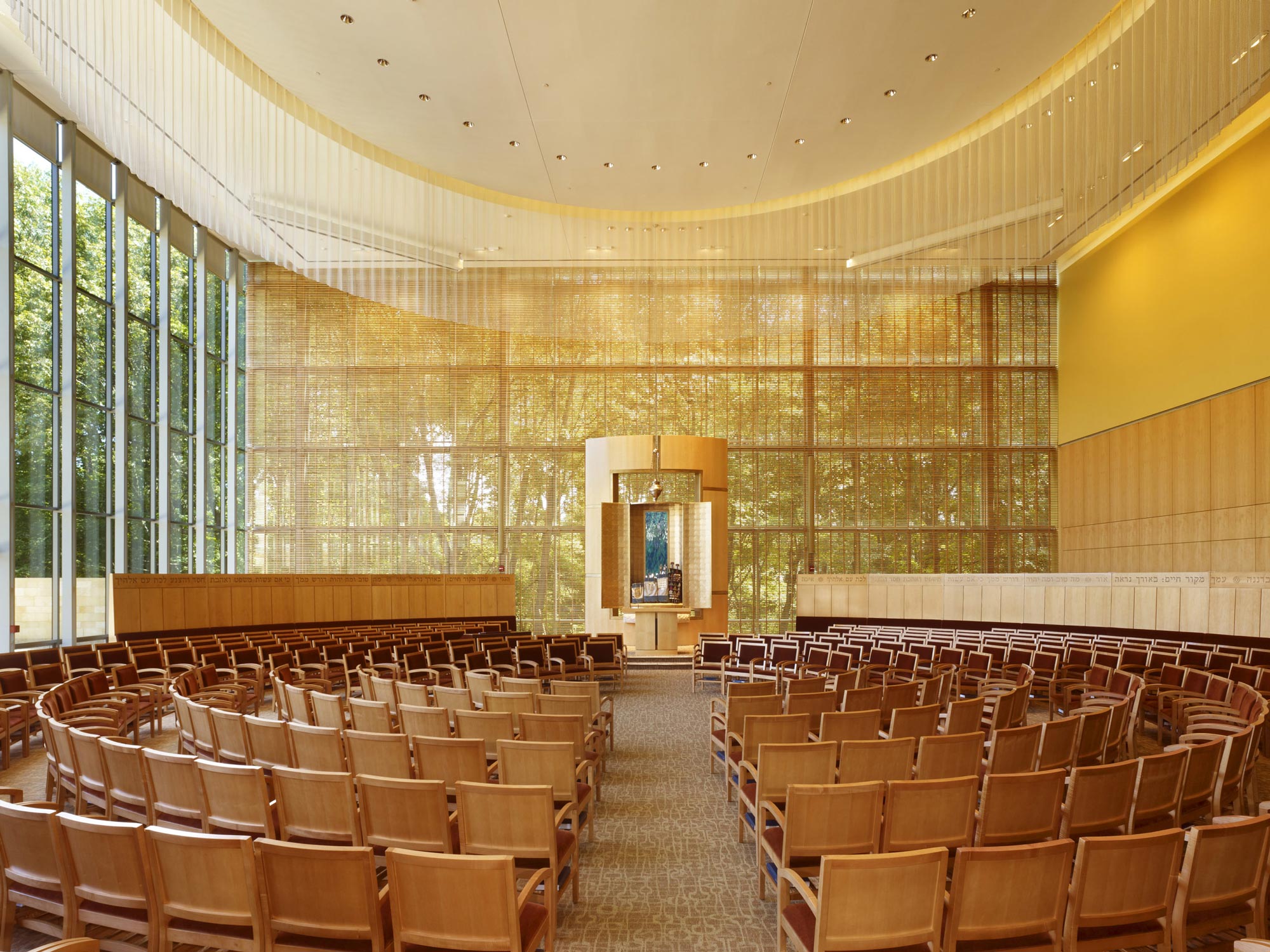Our ark, designed by artist Peter Diepenbrock and architect William Rawn, is imbued with symbolism—some intended by the designers and some the subject of our shared interpretation. Some of the midrashim (interpretations) of our ark include: The layout mirrors the Talmud, in which rabbinic commentary borders the original text of the Torah. Another perspective recognizes that the ark’s border is segmented into six sections, commemorating the six days of creation, surrounding the seventh section, the ark itself, representing Shabbat. In the ark’s cabinet, one can see distinct squares, representing individuals; yet they are inextricably linked together, as a community that forms something sacred and stronger than the sum of its parts. The squares can also be viewed as Jewish communities across time and geography that, together, form k’lal Yisrael—the whole of the people of Israel.
At the base of the ark rests a pink-hued slab of Jerusalem stone, unlike the other Jerusalem stone outside, signifying its origin deep from within the ground of the city of Jerusalem itself. It could hearken back to the altar of the Temple in Jerusalem, or to the stone Jacob rested upon when he dreamed of a Beit Elohim—a house of God—and knew that God was in his midst.

